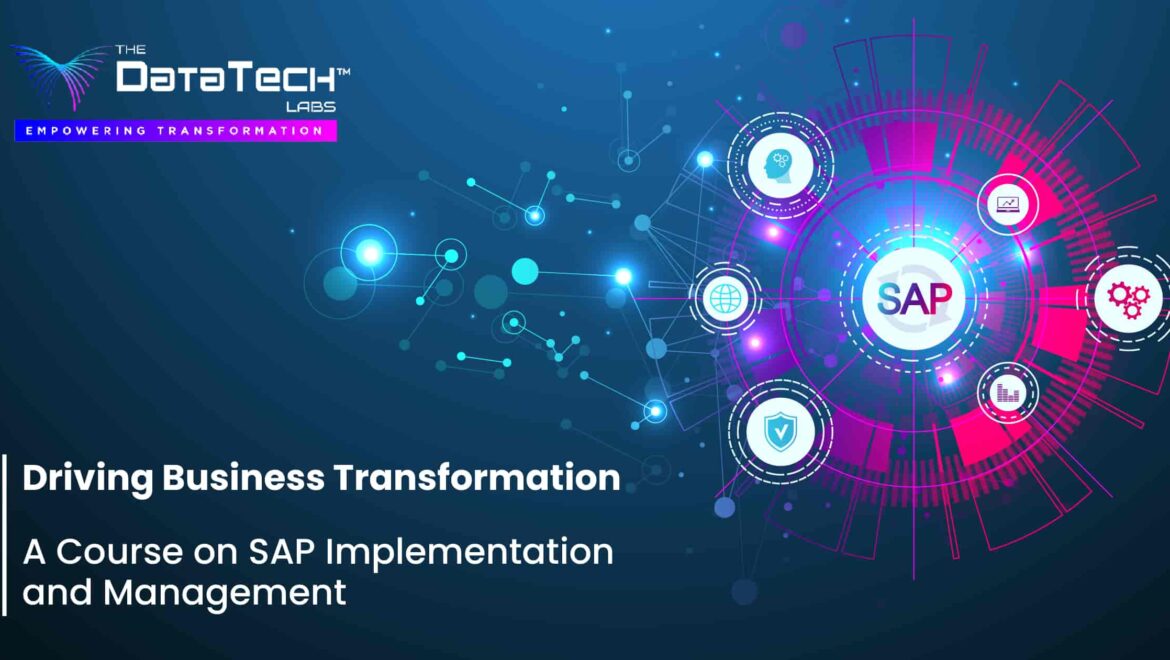Introduction
Overview of SAP
SAP, short for Systems, Applications, and Products in Data Processing, is a leading enterprise resource planning (ERP) software used by organizations worldwide to manage business operations and customer relations. Since its inception in 1972, SAP has evolved to become a crucial tool in the toolkit of modern businesses, facilitating seamless integration of various business processes. Its importance lies in its ability to centralize data management, streamline workflows, and provide real-time analytics, thereby enhancing decision-making capabilities.
Understanding Business Transformation
Business transformation refers to the comprehensive change management approach aimed at aligning an organization’s people, processes, and technology more closely with its business strategy and vision. Technology, particularly ERP systems like SAP, plays a pivotal role in this transformation by enabling businesses to innovate, improve efficiency, and achieve sustainable growth. The key benefits include increased agility, better resource management, and enhanced customer experiences.
Preparing for SAP Implementation
- Assessing Organizational Readiness
Before embarking on an SAP implementation journey, it is essential to evaluate the current state of your business processes. This involves identifying gaps and opportunities where SAP can add value. Setting clear objectives and goals for the implementation ensures alignment with the overall business strategy and helps in measuring success. - Building a Strong Business Case
Justifying the investment in SAP is crucial for gaining stakeholder buy-in. A well-constructed business case should highlight the expected return on investment (ROI) and long-term benefits. Demonstrating how SAP will address existing challenges and support business growth can secure the necessary support from key stakeholders. - Choosing the Right SAP Modules
SAP offers a range of modules tailored to different business needs, from finance and human resources to supply chain management and customer relationship management. Selecting the appropriate modules requires a thorough understanding of your business requirements. Deciding between standard solutions and customizations depends on the specific needs and complexity of your operations.
Planning the SAP Implementation
- Developing an Implementation Strategy
Choosing the right implementation strategy is critical. A phased approach, where the system is implemented in stages, can reduce risks and allow for gradual adaptation. Alternatively, a big bang approach, where the entire system goes live at once, might be suitable for smaller or less complex projects. Establishing a timeline and milestones helps in tracking progress and ensuring timely completion. - Assembling the Project Team
A successful SAP implementation relies on a well-structured project team. Key roles include project managers, SAP consultants, and business analysts. Deciding between internal and external resources depends on the expertise available within the organization. Experienced leadership is essential to guide the project and manage potential challenges. - Budgeting and Resource Allocation
Accurate budgeting and resource allocation are fundamental to project success. This involves estimating costs, planning budgets, and managing resources effectively. Tracking and controlling expenses throughout the project lifecycle ensures that the implementation stays within budget.
Executing the SAP Implementation
- Data Migration and Management
Data migration is a critical step in SAP implementation. It involves cleansing and preparing data to ensure accuracy and integrity. Utilizing appropriate migration tools and techniques can streamline this process and minimize disruptions. - System Configuration and Customization
Initial setup and configuration of the SAP system should align with your business processes. Customizing the system to fit specific needs while managing custom development is crucial for maximizing the benefits of SAP. - Integration with Existing Systems
Ensuring compatibility and seamless integration with existing systems is vital for operational continuity. Utilizing APIs and middleware solutions can address integration challenges and facilitate smooth data flow between systems.
Ensuring Successful Adoption
- Training and Change Management
A comprehensive training plan is essential to ensure that employees can effectively use the new system. Engaging and empowering employees through continuous training and support can mitigate resistance to change and enhance adoption. - User Acceptance Testing (UAT)
Conducting thorough User Acceptance Testing (UAT) ensures that the system meets business requirements and is ready for deployment. Gathering feedback during UAT and addressing any issues is crucial for system readiness. - Go-Live Preparation
Final system checks and a well-structured communication plan are essential for a successful go-live. Establishing support structures for the post-go-live phase ensures that any issues can be promptly addressed.
Post-Implementation Management
- Monitoring and Optimization
Ongoing monitoring of system performance is necessary to identify and address issues promptly. Implementing continuous improvement strategies ensures that the system evolves with changing business needs. - Support and Maintenance
Setting up dedicated support teams and conducting regular maintenance activities are vital for system stability. Staying updated with upgrades and patches ensures that the system remains secure and efficient. - Leveraging SAP for Business Growth
Analyzing business data through SAP can provide valuable insights, enhancing decision-making processes. Exploring advanced SAP features can further drive innovation and support business growth.
Conclusion
Reflecting on the Transformation Journey
Reflecting on the SAP implementation journey, it is important to recognize the key takeaways, measure success, and calculate ROI. Future-proofing your SAP investment involves staying informed about technological advancements and continuously aligning SAP with your business goals.






